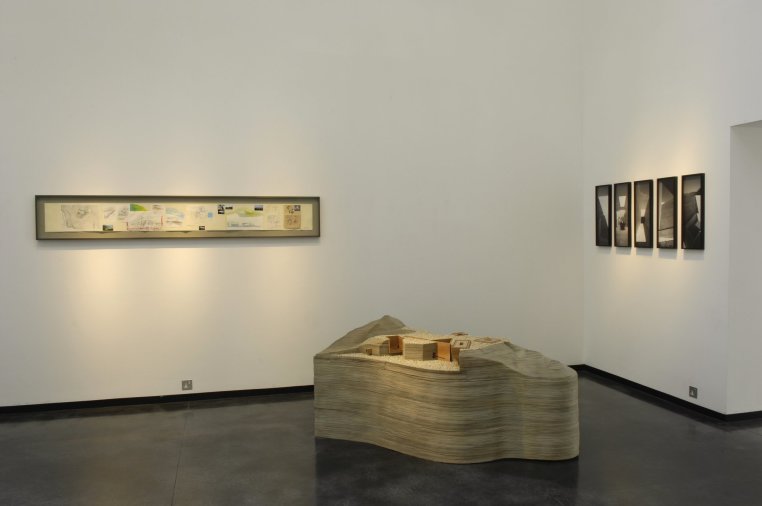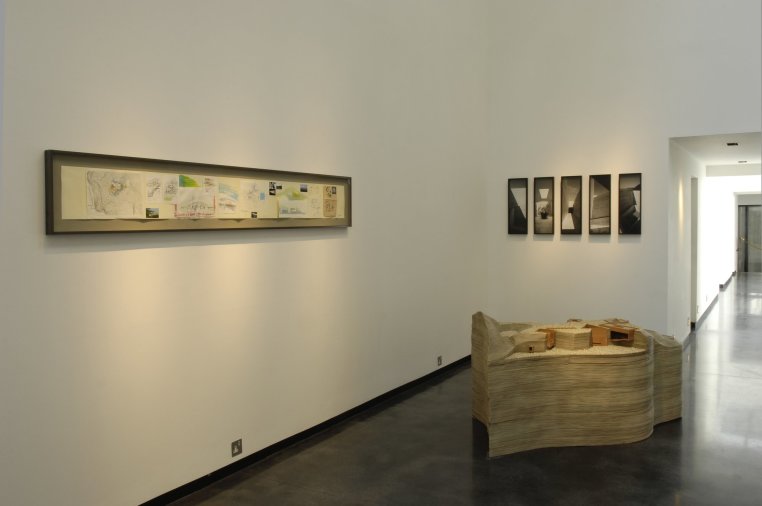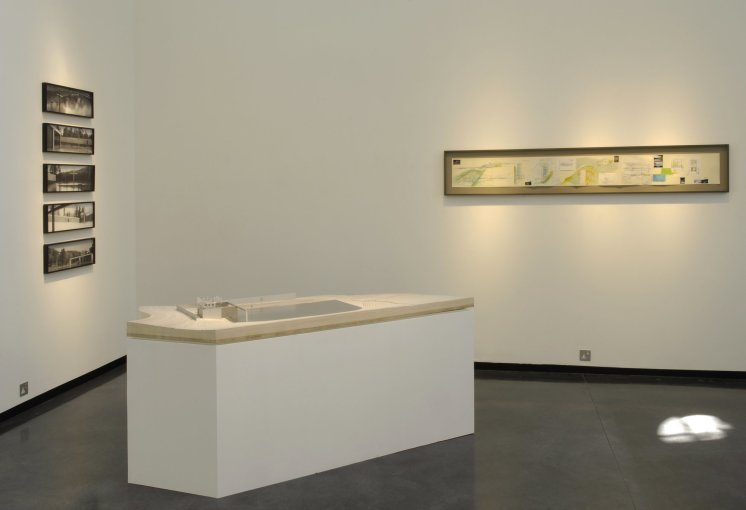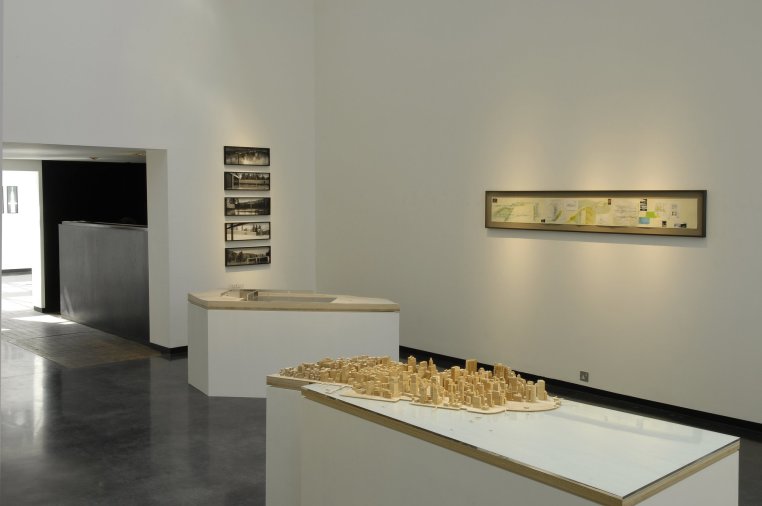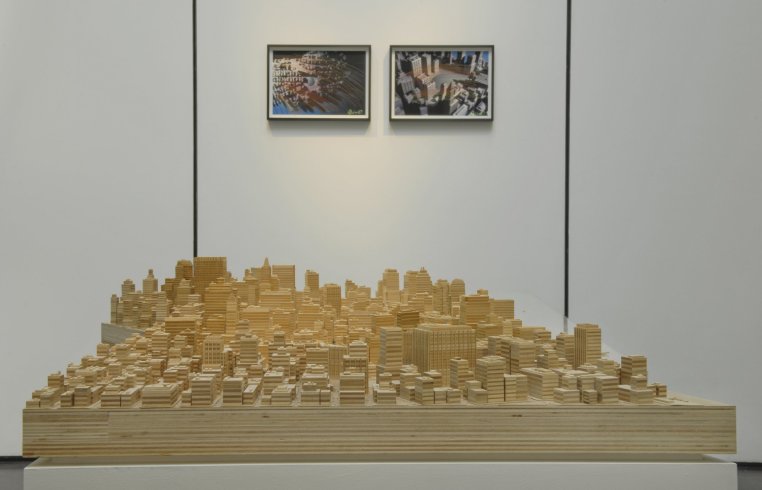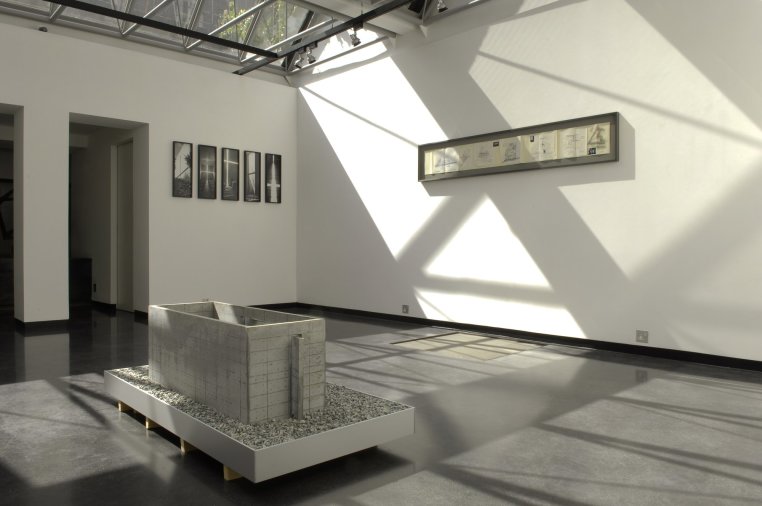Internationally renowned Japanese architect Tadao Ando, born 1941, is hailed a leading authority in his profession and is the only architect to have won the discipline's four most prestigious prizes: the Pritzker, Carlsberg, Praemium Imperiale and Kyoto Prize. Ando's exhibition 'Chinmoku' meaning silence, included three maquettes, sketches and photos relating to some of his most prolific projects: Ground Zero Project, New York, 2001-02, Church on the Water, Hokkaido, 1985-88 and Chichu Art Museum, Naoshima, 2000-04; plus a scale concrete model of Church of the Light, Osaka, 1987-89.
The exhibition was a first for both Ando, who had never shown these materials in a commercial exhibition, and for Hamiltons, marking a momentary break from photography in order to coincide with the unveiling of Ando's installation outside The Connaught Hotel on Carlos Place.
"A mutual friend of Ando and myself, Kazuhito Yoshii - a gallerist in New York City, brought Ando to Hamiltons whilst visiting London. He loved the gallery and an idea was conceived to have a show that would coincide with the unveiling at The Connaught. A portion of the exhibition proceeds will be donated, by Ando and Hamiltons, to benefit charitable organisations caring for orphaned children from the recent Tsunami.", Tim Jefferies, 2011.
Combining influences from Japanese tradition with the best of Modernism, Ando has developed a unique building aesthetic that makes use of concrete, wood, water, light, space and nature in a way that has never existed elsewhere in architecture. Ando has designed award winning private homes, churches, museums apartment complexes and cultural spaces throughout Japan, France, Italy, Spain and the USA.
"Creating architecture is to express representational aspects of the real world, such as nature, history, tradition and society, in a spatial structure, which is an abstract concept, composed by clear, transparent logic.", Tadao Ando.
1. Ground Zero Project, New York, USA
2001 - 02
Following the terrorist attack that struck New York on September 11, 2001:
"At Ground Zero, we propose building a tomb for the repose of souls. A piece of a sphere with a resulting base diameter of 200m, the plan is a "monument" that could be described as a gentle swelling of the earth. It embodies the desire for "just one earth" through dialogue between people, not through economic globalization, and the radius of the sphere was calculated as a ratio of the equatorial radius of the Earth. I hope that the memory of this place that must be passed on to the future will not once again be engulfed by the economic tide.", Tadao Ando.
2. Chichu Art Museum / Naoshima, Kagawa-gun, Kagawa
2000 - 04
"The site (is) on top of a slightly elevated hill into which the remains of a stair-shaped saltpan had been carved. Based the potential of the place and the special program of a "permanent display of spatial art," I proposed a completely "underground architecture" that further develops the experiment at Benesse House of architecture that blends into the scenery." The theme of these continuous underground spaces leading to the art spaces is "light." A labyrinth of darkness produced by a succession of geometric shapes buried underground - the aim was to produce inflected spaces appropriate to an extraordinary place by means of gradations in the quantity and feeling of the light flowing in.", Tadao Ando.
3. Church of the Light, Ibaraki, Osaka
1987 - 89
"Because of the limited budget, the building was unavoidably a simple box shape. How to bring forth a sacred space within this box, appropriate for a place where people gather and pray? After thinking hard for more than a year, I arrived at a composition in which a concrete wall diagonally cuts through the box, dividing the entrance from the single-space worship hall, which has a descending stepped floor... the bare concrete hall contains only pews and a pulpit made of simple, untouched materials. With absolutely no ornamental elements, it is a naked space reduced to the limit. Only a cross-shaped incision in the front wall projects the symbol of the church into this gloomy space: Church of Light.", Tadao Ando.
4. Church on the Water, Yufutsu-gun, Hokkaido
1985 - 88
"The site is located on a plain in a mountainous area in central Hokkaido. I conceived the architecture as an installation unified with nature, allowing this abundant natural life to be sensed directly... The building comprises the church itself, which is planned as a small square overlapping a large square, an artificial lake that extends in front, and an L-shaped concrete wall placed as if enclosing the entire area... This dramatic approach route shifts the consciousness of visitors from ordinary to extraordinary. Walking along the water's edge and finally reaching the building, passing the light-filled entrance crowned with glass blocks, and descending the dark, curving stairs, one reaches the worship hall. People are enveloped in a mysterious sensation, as if their bodies are melting into the magnificent natural scenery... Together with the theme of sacred space in religious architecture, this was a rare opportunity for free experimentation in "architecture unified with nature," a topic I started to think about at that time.", Tadao Ando.
